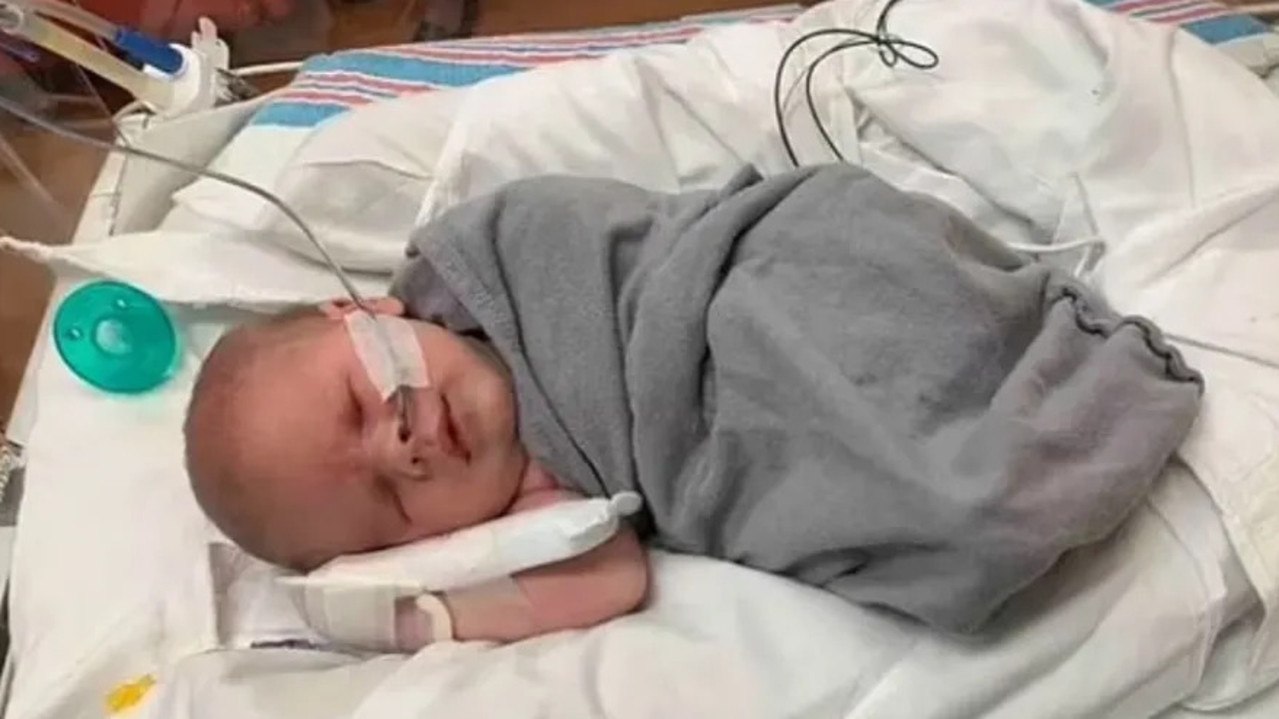Baby Born Without Eyes: Living With Bilateral Anophthalmia

Table of Contents
Understanding Bilateral Anophthalmia
Causes and Diagnosis
Bilateral anophthalmia's causes are multifaceted and often complex. While a definitive cause isn't always identified, several factors can contribute:
- Genetic factors: Genetic mutations and chromosomal abnormalities can play a significant role. Family history of eye abnormalities should be investigated.
- Teratogens: Exposure to certain medications, infections (like rubella), or environmental toxins during pregnancy can disrupt fetal development.
- Chromosomal abnormalities: Conditions like trisomy 13 or 18 are sometimes associated with anophthalmia.
Prenatal diagnosis is possible through ultrasound scans, although the accuracy might vary depending on gestational age. Postnatal confirmation is typically achieved through a thorough ophthalmological examination. It's important to differentiate anophthalmia from microphthalmia; while anophthalmia is the complete absence of an eye, microphthalmia refers to an abnormally small eye.
Impact on Development
Bilateral anophthalmia significantly affects a child's development across multiple domains:
- Sensory development: The absence of sight necessitates heightened reliance on other senses – hearing, touch, and smell – for navigating the environment. Early intervention is crucial for maximizing sensory input.
- Motor skills: Mobility and dexterity require adaptive strategies. Children may learn to navigate using echolocation or assistive devices like canes.
- Social interaction: Developing social skills may require additional support and strategies, as visual cues are unavailable.
- Cognitive development: While cognitive development is typically unaffected, access to appropriate educational resources is vital to ensure academic success. Early intervention programs focusing on tactile learning and auditory stimulation play a significant role.
Daily Life and Adaptive Strategies
Sensory Compensation
Children with bilateral anophthalmia develop remarkable sensory compensation skills. They learn to "see" the world through enhanced hearing and touch:
- Echolocation: Similar to bats, some individuals develop echolocation skills to perceive their surroundings through sound reflections.
- Assistive technologies: Canes provide mobility assistance, while guide dogs offer increased independence and safety. Sensory integration therapy helps improve the processing and use of sensory information.
- Adaptive toys and games: Tactile toys, auditory books, and other adaptive materials stimulate sensory development and promote learning.
Education and Inclusion
Education plays a crucial role in the development of children with bilateral anophthalmia. Inclusive environments are essential for their social and emotional well-being:
- Mainstream vs. specialized education: The ideal educational setting depends on individual needs. Mainstream schools with appropriate support services are often preferable for social integration.
- Assistive technology in education: Braille instruction, assistive listening devices, and specialized software are crucial for accessing educational materials.
- Specialized educational programs: Programs focusing on adaptive learning techniques and sensory integration can significantly benefit these children.
Assistive Technology
A range of assistive technologies can dramatically improve the quality of life for individuals with bilateral anophthalmia:
- Screen readers and magnification software: Enable access to computers and digital devices.
- Navigation apps: Provide auditory guidance for navigating unfamiliar environments.
- Specialized computer software: Offers features designed for visually impaired users. JAWS and NVDA are examples of screen reader software.
Support and Resources for Families
Emotional Support and Counseling
Living with bilateral anophthalmia presents significant emotional challenges for families:
- Parent support groups: Provide peer support, shared experiences, and practical advice.
- Therapy services: Counseling helps parents cope with grief, adjust to the child's needs, and promote positive family dynamics.
- Online communities: Offer a platform for connecting with other families facing similar challenges.
Medical and Therapeutic Interventions
Ongoing medical care and therapeutic interventions are vital:
- Regular eye examinations: Although there are no eyes to treat, regular check-ups can monitor for associated conditions.
- Prosthetics: Eye prosthetics offer cosmetic benefits and may improve the fit of glasses or other assistive devices.
- Genetic counseling: Can help assess the risk of recurrence in future pregnancies.
Advocacy and Awareness
Raising awareness and advocating for improved resources is crucial:
- Organizations supporting individuals with anophthalmia: Provide support, advocacy, and resources for families.
- Legislative issues: Advocating for inclusive policies and accessibility improvements in public spaces.
- Research efforts: Supporting research into the causes, treatments, and management of anophthalmia.
Conclusion
Living with bilateral anophthalmia presents unique challenges, but with early intervention, appropriate adaptive strategies, and supportive environments, individuals can thrive and lead fulfilling lives. The development of strong sensory compensation skills, access to assistive technology, and the unwavering support of families and communities are paramount to success. Understanding and supporting those born with bilateral anophthalmia is crucial for fostering their independence and full participation in society. We encourage you to learn more, connect with support groups like the [insert relevant organization link here], and advocate for increased awareness and improved resources for those living with this condition.

Featured Posts
-
 Rocky Si Averea Lui Sylvester Stallone Cifre Si Detalii
May 11, 2025
Rocky Si Averea Lui Sylvester Stallone Cifre Si Detalii
May 11, 2025 -
 New Baseball Exhibit At East Tennessee History Center Precedes Covenant Health Park Debut
May 11, 2025
New Baseball Exhibit At East Tennessee History Center Precedes Covenant Health Park Debut
May 11, 2025 -
 Cineplex Q1 Earnings Attendance Drop Impacts Profits
May 11, 2025
Cineplex Q1 Earnings Attendance Drop Impacts Profits
May 11, 2025 -
 Sylvester Stallone One Film He Only Directed And Its Critical Failure
May 11, 2025
Sylvester Stallone One Film He Only Directed And Its Critical Failure
May 11, 2025 -
 Injury Report Yankees Vs Brewers Series March 27 30
May 11, 2025
Injury Report Yankees Vs Brewers Series March 27 30
May 11, 2025
